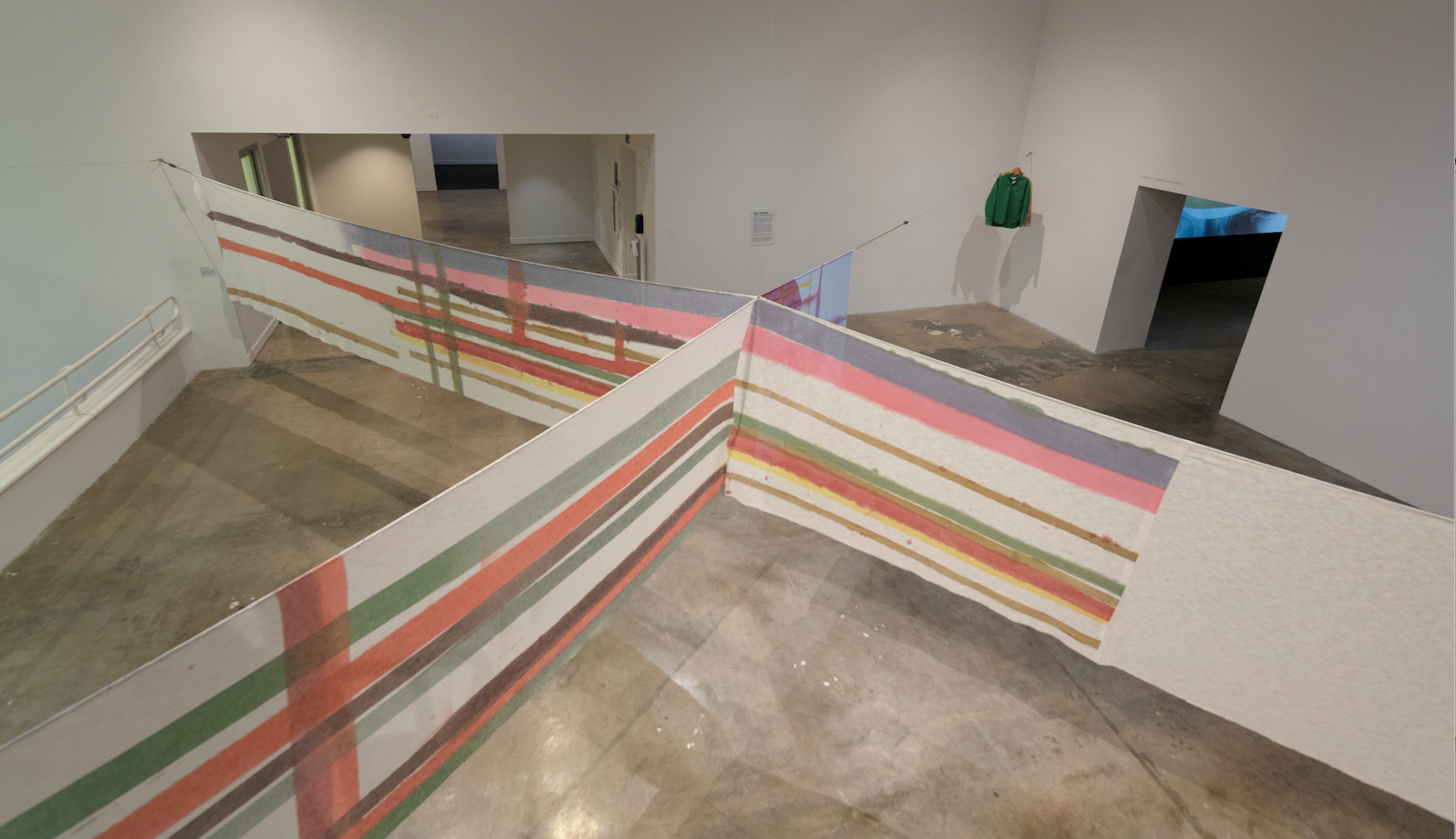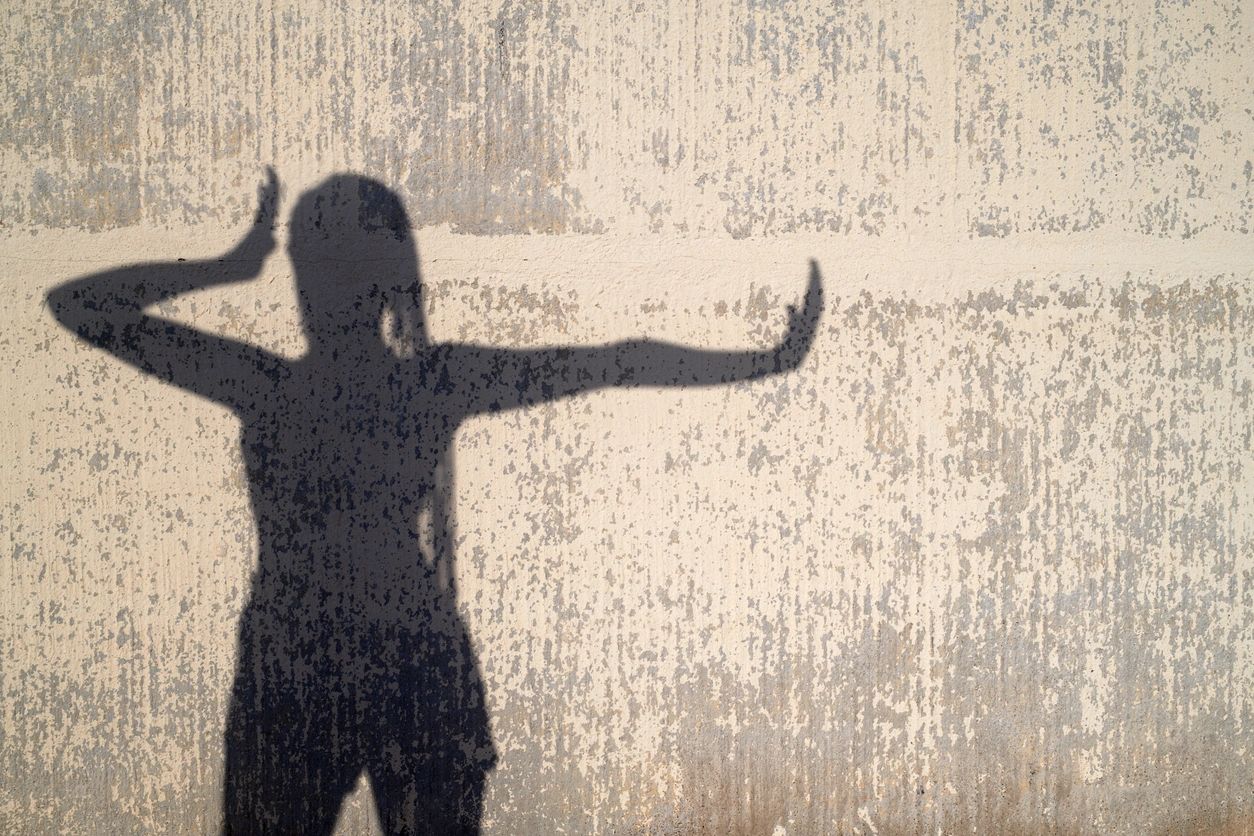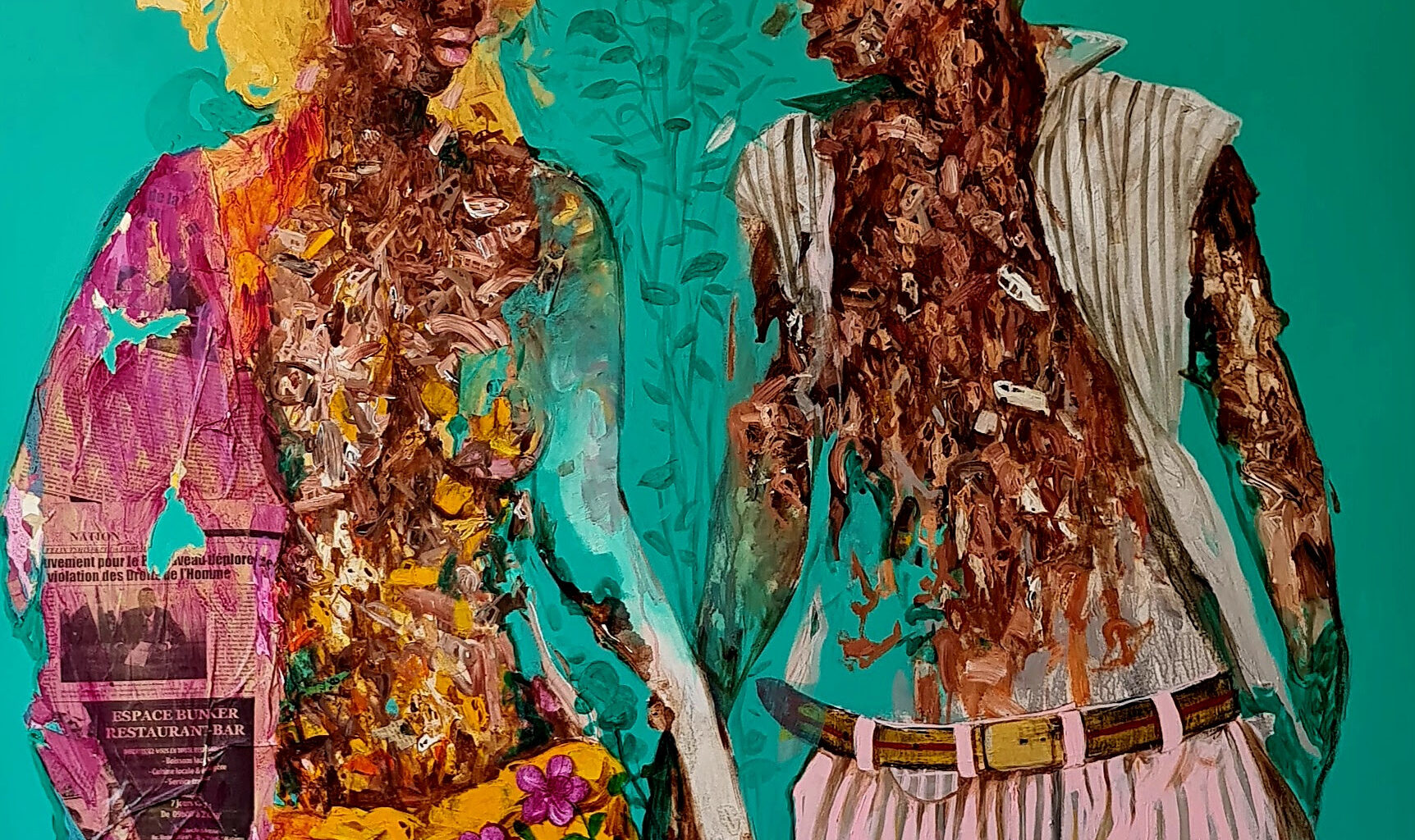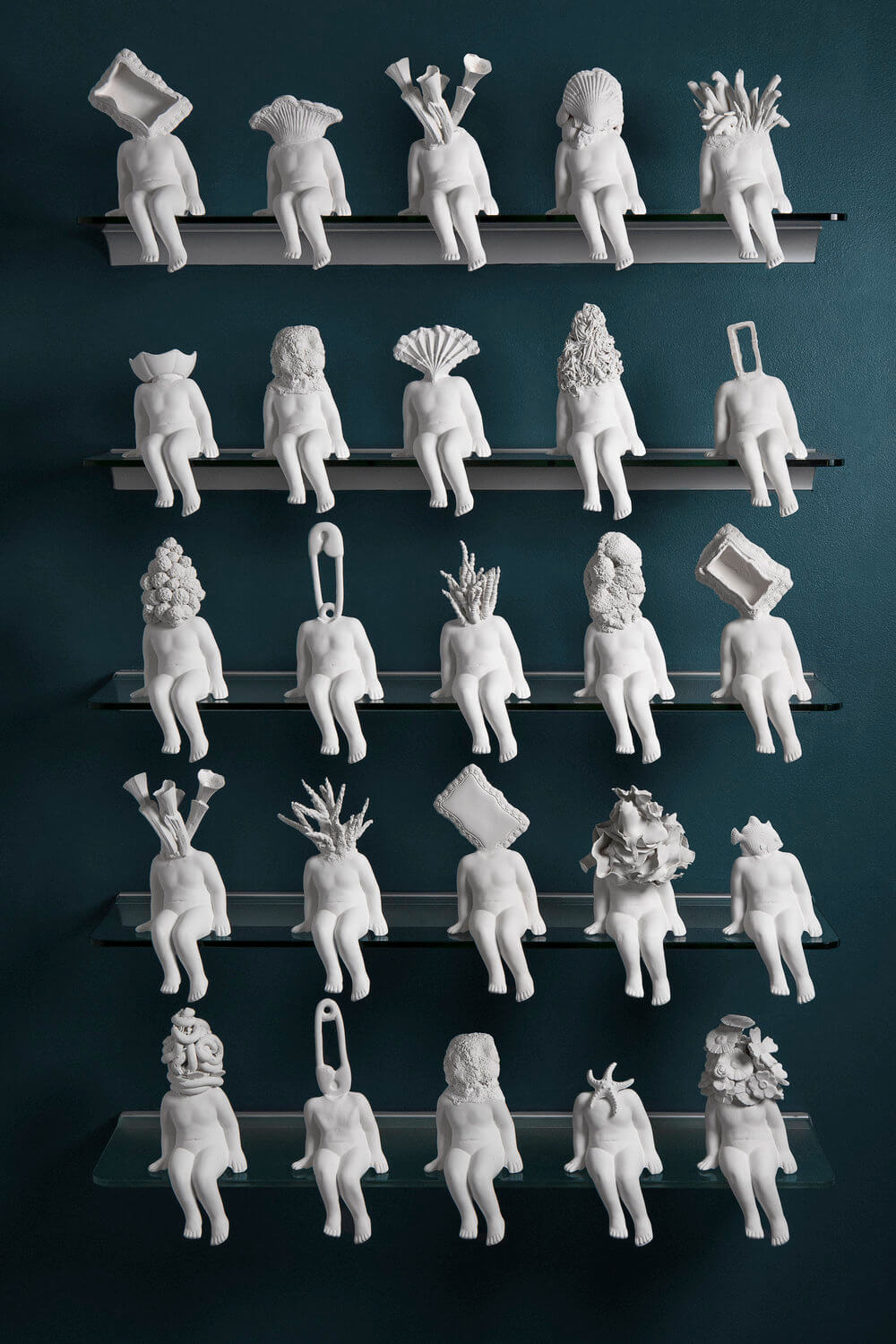Above: Eric N. Mack at NSU Art Museum. Photo by Steven Brooke
Sugarcane’s Kendra Walker recently caught up with artist Eric N. Mack (b. 1987) whose installation, Lemme walk across the room is being repurposed for the NSU Art Museum. (It originally premiered in 2019 at the Brooklyn Museum.) Mack discussed the reimagined installation, opening March 7-Oct. 31, how it works with the new layout, his dealings with white and Black art institutions, his visual experiences with fashion, painting, and other media, his work and who it’s for.
Kendra Walker: Tell me a little bit about yourself and how you got into art.
Eric N. Mack: In relationship to art, as a kid, being really creative and interested in drawing, my mom taking me to art classes, and going through institutional school setting art classes. As a kid, I was always being taken to museums, which of course is educational, but it felt more like a leisure activity. I ended up going to a magnet school for art in high school. In high school, I didn’t really have one discipline I was interested in. There were a lot of creative things that interested me.
My parents always encouraged me to pursue my creative endeavors, because they both had backgrounds in, or at least respected, art making. My dad worked at the National Gallery in Washington, D.C. and my mom was there early in her career.
KW: How have fashion capitals like New York City and Milan, Italy influenced your work?
EM: A lot of things attracted me to New York. I was thinking about what beauty means and what it means in fashion or style. Why would people go to the clothing store, and why they buy it? [This all has] something to do with an ideal of what “they” regard as beautiful or cool, respectable or irreverent. These are some questions that I am still trying to capture. In some ways, my work is able to document that. Not [only in terms of] representations of Blackness, but Black ideas. And more accessible means of communication for people who don’t have the luxury to have a still moment with an artwork.
I did a residency before the Brooklyn Museum show in Milan, Italy for about three months, and some of my pieces were also inspired by that experience. There’s a work where I used some fabrics, all sourced from the textile shops in Milan. I find that important because I’m in relationship to the garment structure and how important Italian production is to the garments in the U.S. or what people regard as luxury and as beautiful or expensive, thinking about manipulation of value and how we connect as a society.
Milan is such a special place because of all these fashion brands. Histories come together, thinking about Prada and Gucci, which is such an industrious kind of place, but it’s also incredibly creative. The way people wear these brands in the States. The way that people wear Montclair (which is an Italian brand, made in Milan), how those things are reused, and how the meaning shifted because of “who” was wearing it.
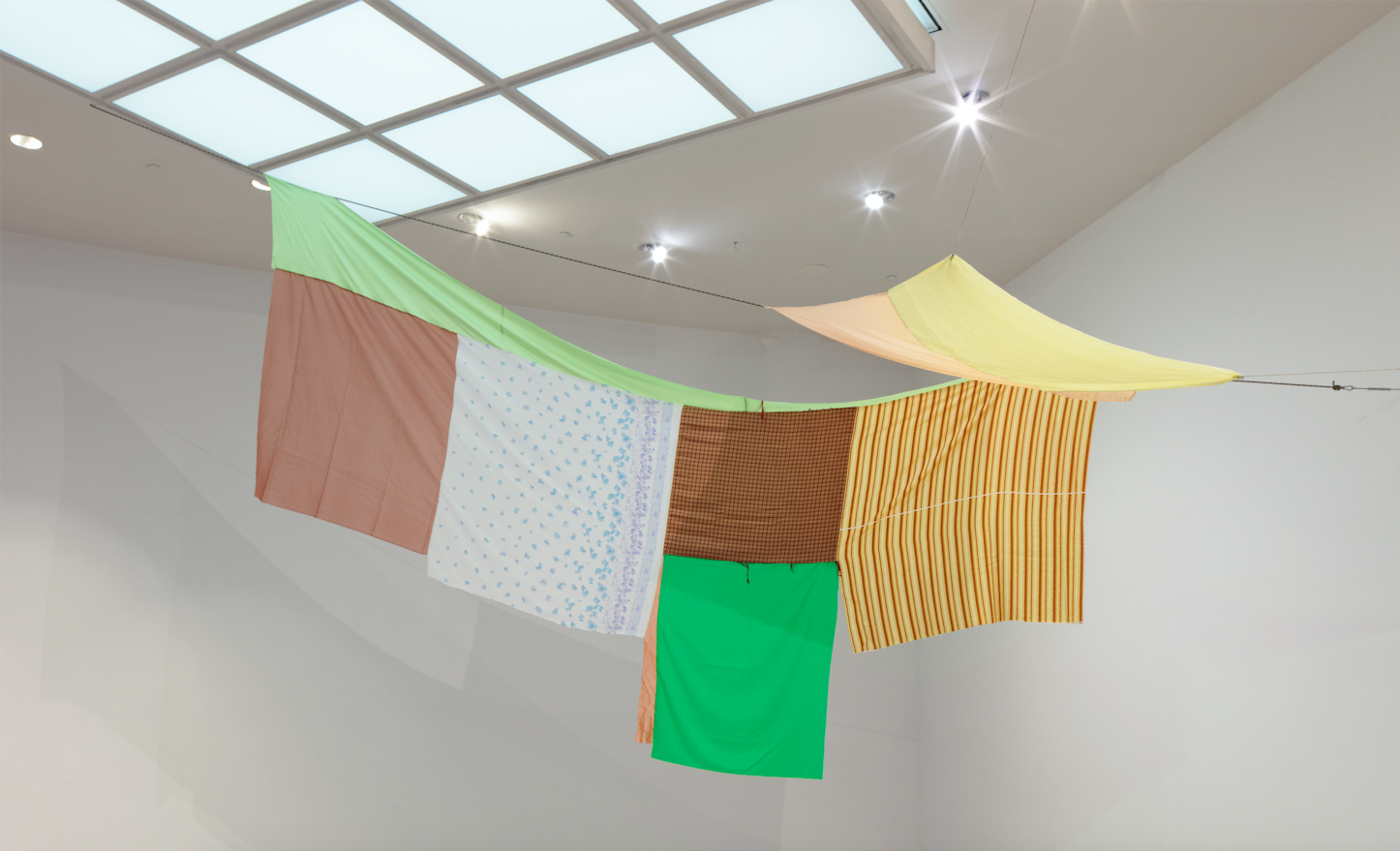
Above: Work by Eric N. Mack. Photo by Steven Brooke.
KW: On the note of accessibility, sometimes there’s a weird merge between the art world and things not being comprehended by people from all walks of life. Because of the complexities in your work, could you give a simplified explanation of what your work is about?
EM: My work has a lot to do with my family, and where I grew up in the Maryland-D.C. area. The work is about an expanse and a flexibility that considers architecture in some cases. It considers the space of painting being building blocks for a different way of seeing not how we represent ourselves, but how we see things. One of the things that my work definitely does is allow abstraction to become tangible and tactile, or made visible. To give it presence and acknowledge the poetic concepts that physically exist in everyday experiences. I really want my work to give people the license to be able to think outside the box, it’s very much about exploration of ideas and space.
KW: Who are you making this work for?
EM: There’s a wide range of people that I feel that the work is for. The work in a lot of ways is for young people as a way of acknowledging the past. Young people have more of a predisposition to connect with some of the themes in the work, thinking about the closeness of fashion and art. My work definitely has a lot to do with abstract expressionism and its history in New York painting. There’s a lot of expectations for Black art, and maybe those are based on trends and certain kinds of visibility of certain works, or maybe even literalism, where people are looking at or looking for representation of Blackness, to find Black artists, which is not necessarily one in the same. Young, Black children, old Black people, need to be able to see that brought to life without it pandering to one or the other. I’m interested in people experiencing the beauty of the work. Everybody could see this work and should be able to connect with it.
KW: How do you feel about your work living in white institutions?
EM: These institutions, for a long time, have been constrictions and points of oppression and ways in which people were made to feel they were not a part of. Thinking [back to] one of my first shows with the Studio Museum in Harlem, which we know is a historically Black-collecting museum. Those acquisitions were supportive, and pushing the work, and allowing the work to be equipped to be in any institution. I do know that these institutions need to be accountable for the oppression that we talked about. You consider inclusion, which is important, but I really want people to want these institutions, Black or white, to anticipate Black viewers. The biggest mistake in culture, period, is the fact that they’re anticipating the viewership of white people. [With that said] it’s definitely important for me to show up and show the work, show my best. No matter what the institution.
KW: I was looking at some older work that you did for the outside installation on the gas station, and now we’re talking about the exhibition at NSU Art Museum, which is inside. Which would you say that you like more: working on a larger or a smaller scale?
EM: Both are important, and I want to continue working in both spaces, because they inform one another. I learned a lot working on the work on the halter. And to use the space inside the museum is also very much the way that people experience most art, both are really important, and have their own points of intrigue to me.
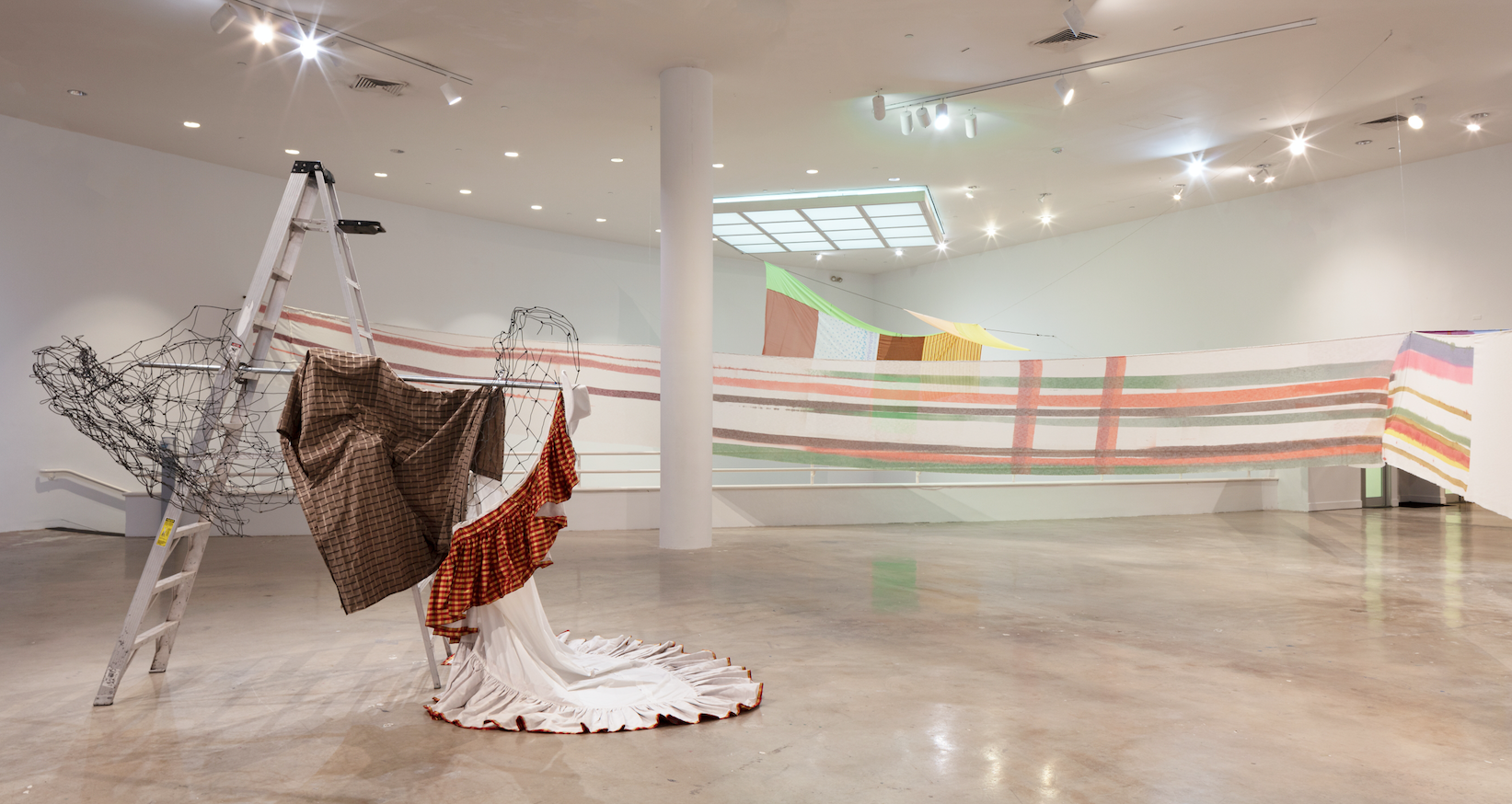
KW: Speaking of the show coming up, Lemme walk across the room, let’s talk about that a little bit more in depth. Besides certain pieces having to be stretched a little differently at the NSU Art Museum, how else would you say that this exhibition is going to be different than the one in New York?
EM: It’s such a different space. What we’re doing NSU Art Museum, it’s going to be in the atrium of this space. As you enter this museum, you walk up the stairs and you’re in the show. You literally have to walk across and deal with the way that the space is divided in order to experience the rest of the museum. The work continues as a framing device for the museum. The Brooklyn Museum space was a square space, and I tried to deal with the white cube and to divide it in a different way. The New Art South Florida Museum has more of a curvature. It’s going to be a little bit more astir and very much about the form of the works, which might accentuate the pieces in themselves. I’m excited about that.
KW: If someone saw this show back in 2019 at the Brooklyn Museum, would you suggest that they come and see this show coming up?
EM: Absolutely, because the space dictates the way that the work is perceived. It’d be interesting to see if those works will feel reoriented. We are going to have some local performers as a point of activation, which we did at the Brooklyn Museum.
KW: Speaking of having live performances, has COVID affected any plans for this exhibition?
EM: Yes, many times. The show was supposed to happen in September. I’m thankful that we can proceed, at this point, safely.







